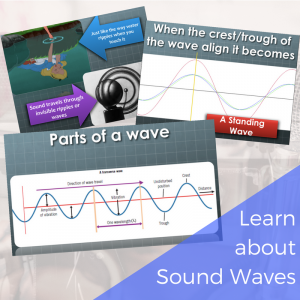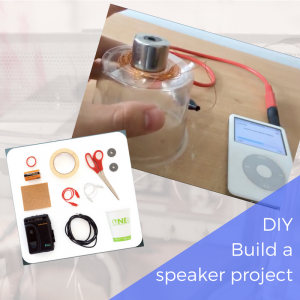
Radio & Sound: An Interactive Science Unit
You heard it here first, teaching sounds waves can be fun! We spent a full week exploring the properties of waves and vibrations, as well as amplitude and frequency. The unit culminated in two hands-on projects: building a DIY speaker from wire, magnets, and a plastic cup, and Snap Circuits FM Radio kits. However, this hands-on interactive unit was not part of any science class, but rather music!
Lesson & Materials can be found here: https://www.teacherspayteachers.com/Product/Radio-Sound-A-Cross-Curricular-Music-Science-Unit-3396030
As part of my 21st Century Music curriculum, I felt it essential for students to have an understanding of the way sound works, as well as the importance of radio in the way music developed. We were able to accomplish both of these lofty goals with a fantastic hands-on unit that has students learning, applying, and most importantly discovering what works and what didn’t. This unit requires a little bit of prep, and some materials (list here) to get it up and running, but once you acquire them you should be able to run it for years to come!
 To start we discussed the properties of waves and the idea that sound is a vibration. I use a ton of great video examples. NPR’s Skunkbear has a great video on seeing sound waves. We cover vocabulary, review with a short 10 question Kahoot and the students get to experiment with vibrations with the classic “tin can telephone” experiment. Wrapping yarn around an object and their fingers, they plug their ears and see how the noise is different as sound vibrates through the air versus through their fingers. We explore questions like, why do different objects sound different, what happens if you use different lengths of yarn, and what happens if you stop the yarn/object from vibrating.
To start we discussed the properties of waves and the idea that sound is a vibration. I use a ton of great video examples. NPR’s Skunkbear has a great video on seeing sound waves. We cover vocabulary, review with a short 10 question Kahoot and the students get to experiment with vibrations with the classic “tin can telephone” experiment. Wrapping yarn around an object and their fingers, they plug their ears and see how the noise is different as sound vibrates through the air versus through their fingers. We explore questions like, why do different objects sound different, what happens if you use different lengths of yarn, and what happens if you stop the yarn/object from vibrating.
 The next day moves into my favorite part, the DIY Speaker project. With the help of several YouTubers I managed to get a successful prototype working in my home (important) and then brought it to school. I posted a tutorial video in their Google Classroom and broke the class into 5 groups of 6 students. From their I gave them minimal instruction and allowed them to explore. I think this is the most important part of the whole unit, watching the video above I included one of my favorite moments of entire week. A group is testing their speaker, and one boy realizes, if he can’t hear the commercial then their product doesn’t work, another one suggests the wires are twisted, and together they set off to rectify the situation. That type of learning is essential to the understanding of the content and the overall development of your students.
The next day moves into my favorite part, the DIY Speaker project. With the help of several YouTubers I managed to get a successful prototype working in my home (important) and then brought it to school. I posted a tutorial video in their Google Classroom and broke the class into 5 groups of 6 students. From their I gave them minimal instruction and allowed them to explore. I think this is the most important part of the whole unit, watching the video above I included one of my favorite moments of entire week. A group is testing their speaker, and one boy realizes, if he can’t hear the commercial then their product doesn’t work, another one suggests the wires are twisted, and together they set off to rectify the situation. That type of learning is essential to the understanding of the content and the overall development of your students.
Depending on the time you want to spend on this topic, there are a lot of ways you can go from here. I was lucky enough to have Snap Circuit FM Radio Kits from a previous year’s Donor’s Choose (thanks again!) and so I tied sound waves to radio waves (AM & FM are Amplitude & Frequency Modulation – did you know that?) There’s also the route of pitch and having students see that different sized items vibrate at differently and that impacts their sound. Smaller objects have a higher pitch, larger lower, etc. You can build a water glass xylophone and play Hot Cross Buns. Or build straw kazoos, I didn’t get to this easy and fun experiment this time around, but I’ve done it in the past with younger grade. Check it out here! Ultimately I think that a dry and complicated topic like sound waves can become interesting and approachable if you let the students actually experience what they’re learning about. A kid can yell to hear their echo for hours and not be bored, so don’t make the same concept boring in your class. Give them the tools and skills to understand that phenomena in the natural world around them, all while satisfying NGSS Science Standards.